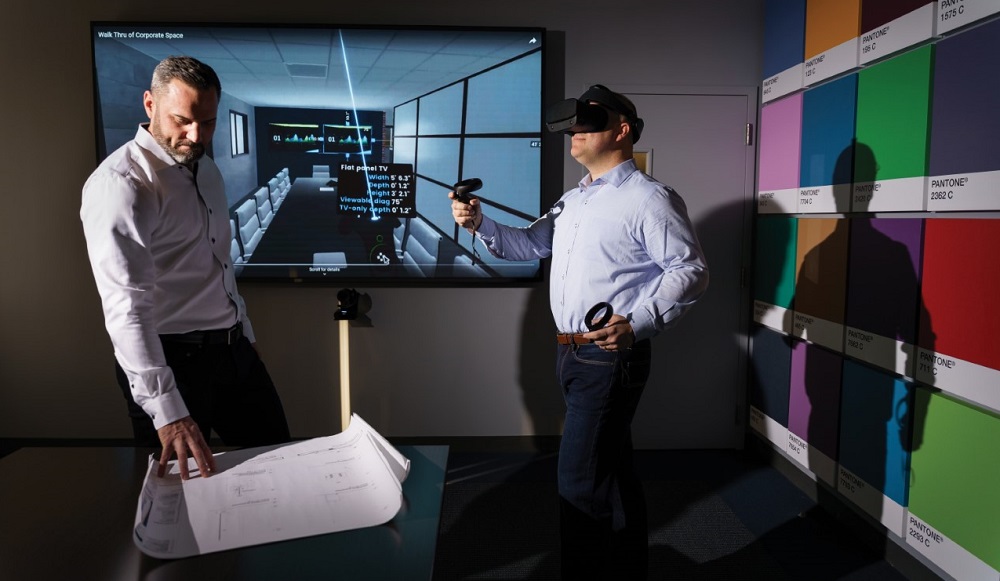Any AV integrator that hasn’t made the shift to a service-based model by now—or at the very least dipped their toes into the recurring monthly revenue waters—has missed out on much more business in the last nine months since the coronavirus outbreak than was necessary.
The sad reality is the short-sighted approach to AV integration—with a focus on selling boxes and just installing AV systems for customers—might be the death knell for many companies that were living project to project, especially since the projects have dried up significantly since the spring.
In the Total Tech Summit session “Taking Your Business to New Heights with New Technologies,” three AV industry leaders highlighted the importance of a service component to your AV integration firm among other technologies that could help make the rocky months ahead a little easier to manage.
“It can be a disservice to your customers to add more platforms, but devices are all given heartbeats now,” said DGI Communications’ Mike Walsh. “You can be proactively monitoring things.”
That will allow you to provide more complete information to clients about problems and possible solutions.
Related: Total Tech Summit Attendees Will Keep the Conversation Going All Year Long
The DGI team looks for trends in the data it collects from its remote monitoring and identifies issues or problems that continue to crop up, often fixing them before the customer even knows anything is wrong.
“Our task and our responsibility with data is to really critique it,” said Walsh.
AVI Systems’ Robert Mathews says it’s “so important” for AV integrators to have a service desk today.
“As long as you have the right capabilities, it’s going to be a good model,” he said. “It’s one thing to be able to deliver an endpoint, but it’s quite another to be able to monitor and service it.”
1Path’s Patrick Kinsella says AV integrators have a “responsibility to offer a service desk,” especially as the complexity and intricacy of AV integration systems increases.
“We’ve gone from training our customers on how to use their systems to fully managing it for them,” he said. “As the data gets more complex, it’s going to be on the integrator to deliver the information the customer needs to make better decisions for their businesses.”
Thermal Imaging, 16K, 5G, AR, VR and More
Thermal imaging and occupancy sensors have become major tools in helping businesses in all verticals manage crowds and keep people as safe as possible as the COVID-19 pandemic continues to spread around the world.
AV integrators will be busy installing the systems but they’re not cut-and-dried.
“Thermal imaging is not something to be taken lightly,” said Mathews. “It’s not a medical device or a health care product, but it is going to give some valuable information.”
Just how much and what information it gives is one question, said Kinsella.
“You start knocking on the door of HIPAA compliance,” he said, referring to the federal legislation that protects patients’ personal health information.
Digital signage has become even more important these days as people want and need information about the stores, restaurants, hotels and other buildings they want to enter if it’s safe to do so. That means an increased emphasis on providing the right content quickly for people, said Walsh.
“One of the biggest problems digital signage has always had is content,” he said. “If the content isn’t captivating, you lose the audience.”
Digital signage has one main job, said Mathews: “to share a message.”
Kinsella pointed to the “shared responsibility between the owner and the creator” of the digital signage content to ensure the message being delivered is captivating and informative.
Mathews called 5G “a really fast sports car that’s going to be stuck in the slow lane for a while until we see new ones built.” He sees great potential in telehealth and distance learning using 5G and all of the capabilities it’s touted to have by its developers.
Kinsella notes not all 5G experiences will be the same, depending on the carrier delivering it, but it’s not a bad idea to invest in enhanced video cameras that will make for better collaboration and could mean better audio with noise cancellation at some point down the road.
4K is finally becoming a staple across most segments of the AV industry but there’s been talk of 8K and 16K almost since the introduction of 4K, so when does the resolution become so fine that there’s no discernable difference to most people?
“There’s still an opportunity to have better resolution, even within 4K,” said Walsh, noting medical applications can always use more detailed images.
“One thing that’s critical is how we’re going to get the content,” said Mathews. “The other question is whether we want to see the beach or the grains of sand.” People have to sit 2 feet or less away from a 50-inch screen equipped with 8K to see a difference, he said.
He sees potential for robust growth in wearable technology and augmented reality. AR can be used on construction sites through building information modeling software to virtually walk around a site, he said.
He sees potential for robust growth in wearable technology and augmented reality.
AR can be used on construction sites through building information modeling software to virtually walk around a site, he said.
Retailers could use AR to enhance online shopping, said Kinsella, and businesses might implement it more often to reduce travel and entertainment budgets.
“It’s remarkable to see where this technology is going to take us,” said Mathews.
Kinsella knows there will be a market for high-resolution video displays, no matter how fine they get.
“The same way audiophiles claim they can hear the difference between a couple of high-resolution speakers, there will those who buy into the novelty of 8K and 16K, he said. “I don’t see mass adoption of 16K, especially in the movie and TV industry, though.”
Walsh and the DGI team have been relying on virtual reality for a while to help customers understand what their integrated AV systems will feel and sound like before they’re installed.
“There’s nothing like bringing a client into your space and helping them conceptualize or even making some changes,” he said. DGI customers can test acoustics, microphones, speakers and other elements of systems through the VR platform the company has set up in its HQ, said Walsh.











